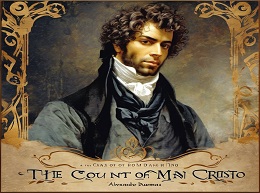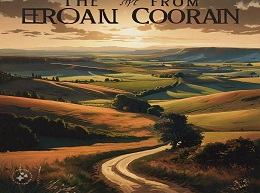Cloud Atlas
A Journey Through Time and Souls: A Review of Cloud Atlas
David Mitchell's Cloud Atlas is a remarkable literary achievement, weaving together six interconnected stories that span across different time periods and genres. Published in 2004, the novel defies conventional storytelling, presenting a complex narrative structure that challenges readers while offering deep insights into human nature, interconnectedness, and the cyclical nature of history. This review will delve into the intricate plot, the richly developed characters, the overarching themes, and the unique literary techniques that make Cloud Atlas a masterpiece of contemporary literature.
Six Interconnected Stories
Cloud Atlas is composed of six nested stories, each set in a different time period and told in a distinct genre. The stories are:
1. The Pacific Journal of Adam Ewing (1849): A historical narrative about an American notary, Adam Ewing, traveling from the Chatham Islands to San Francisco, who encounters a stowaway slave named Autua.
2. Letters from Zedelghem (1936): A series of letters written by Robert Frobisher, a young English composer, to his friend Rufus Sixsmith. Frobisher becomes an amanuensis to a famous but ailing composer, Vyvyan Ayrs, in Belgium.
3. Half-Lives: The First Luisa Rey Mystery (1973): A thriller featuring journalist Luisa Rey, who uncovers a conspiracy at a nuclear power plant.
4. The Ghastly Ordeal of Timothy Cavendish (Early 21st Century): A comedic tale about Timothy Cavendish, a vanity press publisher who finds himself trapped in a nursing home.
5. An Orison of Sonmi~451 (Dystopian Future): A science fiction story set in a dystopian Korea, where Sonmi~451, a genetically engineered fabricant, tells her story to an archivist before her execution.
6. Sloosha's Crossin' an' Ev'rythin' After (Post-apocalyptic Future): A post-apocalyptic narrative centered on Zachry, a tribesman living in Hawaii, who encounters Meronym, a member of a technologically advanced society.
Each story is interrupted at a crucial point, only to be resumed in the second half of the novel, creating a mirror structure that links the narratives across time.
The Narrative Structure
Mitchell employs a unique narrative structure where the stories are presented in a nested format. The novel begins with Adam Ewing's journal, which is interrupted, followed by Robert Frobisher's letters, and so on, until Zachry's story is told in its entirety at the midpoint. The novel then unfolds in reverse order, concluding each interrupted story, and finally ending with the completion of Adam Ewing's journal. This structure not only emphasizes the interconnectedness of the stories but also creates a sense of continuity and cyclical progression.
Adam Ewing
Adam Ewing's journey is one of moral awakening and transformation. Initially naive and complicit in the exploitation he witnesses, Ewing's encounter with Autua and his subsequent realization of the pervasive cruelty in the world lead him to become a more conscientious and compassionate individual. His story underscores themes of moral responsibility and the potential for personal growth.
Robert Frobisher
Robert Frobisher is a complex character, driven by ambition and plagued by self-destructive tendencies. His letters reveal his struggle for artistic recognition and his tumultuous relationship with Vyvyan Ayrs. Frobisher's tragic end highlights the often-destructive nature of genius and the isolation that accompanies it.
Luisa Rey
Luisa Rey is a determined and courageous journalist who embodies the archetype of the investigative hero. Her story, reminiscent of a classic thriller, exposes corporate corruption and environmental hazards. Luisa's perseverance and moral integrity make her a compelling protagonist who fights for justice despite immense personal risk.
Timothy Cavendish
Timothy Cavendish's story provides a humorous yet poignant commentary on aging and the indignities of the modern world. His character arc, from a self-centered publisher to a man who finds unexpected camaraderie and resilience in the face of adversity, adds a lighter yet thought-provoking dimension to the novel.
Sonmi~451
Sonmi~451's narrative is a powerful critique of consumerism, dehumanization, and the pursuit of knowledge. Her transformation from a subservient fabricant to a revolutionary figure symbolizes the quest for identity and autonomy. Sonmi's story raises profound ethical questions about the nature of humanity and the consequences of technological advancement.
Zachry
Zachry's post-apocalyptic tale is a meditation on fear, faith, and survival. His interactions with Meronym challenge his preconceived notions and highlight the clash between primitive superstition and advanced knowledge. Zachry's growth from a fearful survivor to a man who embraces change and cooperation reflects the novel's theme of interconnectedness and the enduring human spirit.
Interconnectedness
A central theme in Cloud Atlas is the interconnectedness of all human lives. The characters' actions reverberate across time, influencing future generations. This is symbolized by recurring motifs such as the comet-shaped birthmark shared by several protagonists and the musical composition "Cloud Atlas Sextet," which appears in multiple narratives. These connections illustrate how individual lives are part of a larger, interconnected tapestry.
Power and Oppression
The novel explores the dynamics of power and oppression in various forms, from colonial exploitation and corporate corruption to systemic dehumanization and post-apocalyptic tribalism. Each story highlights the struggle against oppressive forces and the quest for freedom and justice, revealing the cyclical nature of these conflicts throughout history.
Identity and Transformation
Identity and transformation are recurring themes in Cloud Atlas. Characters like Sonmi~451 and Adam Ewing undergo significant personal transformations, challenging their initial beliefs and societal roles. The novel suggests that identity is fluid and can be reshaped through experiences and choices, emphasizing the potential for growth and redemption.
The Cyclical Nature of History
Mitchell's novel portrays history as a series of cycles, where patterns of behavior and events repeat across different eras. This cyclical nature is evident in the mirrored structure of the narrative and the recurring themes of power, oppression, and resistance. The novel encourages readers to reflect on the lessons of the past and the possibilities for change in the future.
Narrative Structure
The innovative narrative structure of *Cloud Atlas* is one of its most striking features. The nested, mirror format not only enhances the thematic connections between the stories but also creates a sense of anticipation and continuity. This structure challenges readers to piece together the larger narrative, making the reading experience more engaging and rewarding.
Multiple Genres and Styles
Mitchell masterfully employs different genres and writing styles for each story, ranging from historical fiction and epistolary narrative to dystopian sci-fi and post-apocalyptic adventure. This diversity showcases Mitchell's versatility as a writer and enriches the novel's exploration of its themes. The distinct voices and tones of each narrative add depth and complexity to the overall work.
Symbolism and Motifs
Recurring symbols and motifs, such as the comet-shaped birthmark and the "Cloud Atlas Sextet," reinforce the novel's themes of interconnectedness and the cyclical nature of history. These symbols serve as threads that link the disparate stories, creating a cohesive and unified narrative tapestry. The use of symbolism adds layers of meaning and invites readers to uncover deeper connections.
Character Arcs
Mitchell's skillful development of character arcs adds emotional resonance to the novel. Each protagonist undergoes significant growth and transformation, often influenced by the actions and experiences of those in other timelines. These arcs provide a sense of continuity and evolution, highlighting the impact of individual lives on the broader human experience.
Cloud Atlas is a literary tour de force that challenges conventional storytelling while offering profound insights into human nature and history. David Mitchell's masterful blending of genres, innovative narrative structure, and richly developed characters create a captivating and thought-provoking novel. The themes of interconnectedness, power, identity, and the cyclical nature of history resonate deeply, making Cloud Atlas a timeless and universal tale. Whether you are drawn to its intricate plot, its philosophical reflections, or its rich character development, Cloud Atlas offers a reading experience that is both intellectually stimulating and emotionally engaging.













